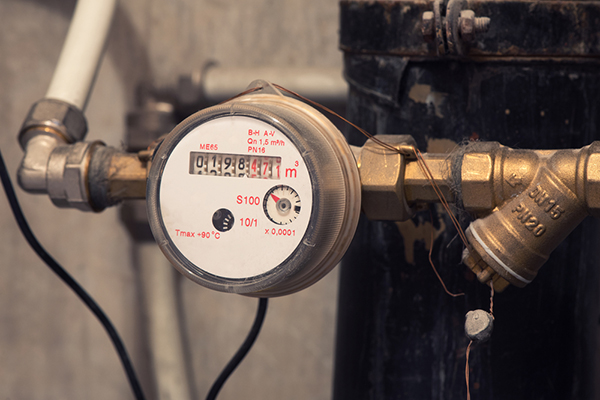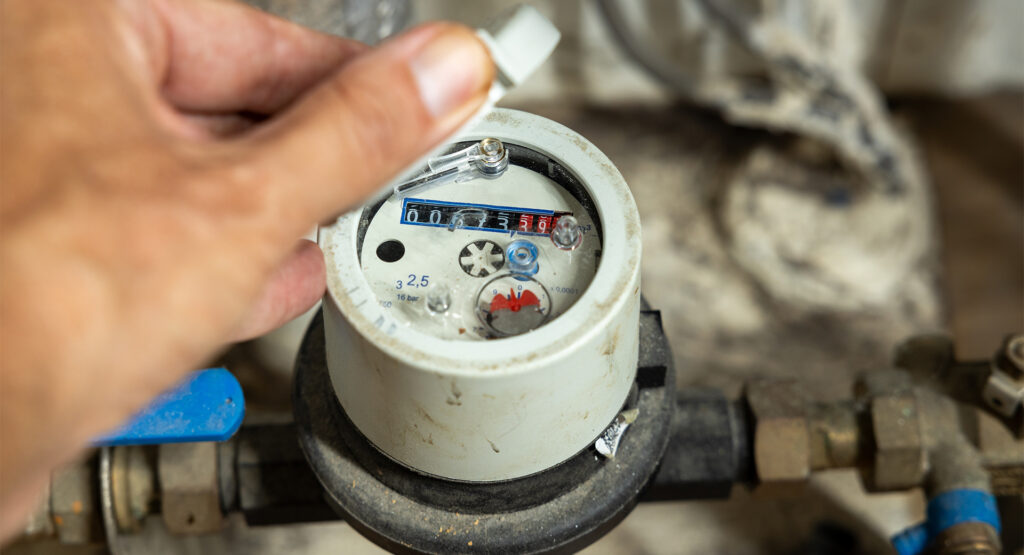The water meter in your house is typically located either outside or inside. Outside, it might be in a concrete or plastic meter box near the street or sidewalk.
You can usually find the water meter outside your home, close to the property line, and near the street or sidewalk. Look for a metal or plastic lid marked “water meter,” which you can open to view the meter.
Inside, check areas like the basement, utility room, or mechanical closet, near the main water shut-off valve. If you’re still unsure, consider asking previous homeowners or landlords for help.
Alternatively, you can contact the water utility company for guidance. They may be able to provide information on the location of the water meter in your house.
Common Types of Water Meters

There are several common types of water meters used to measure water consumption in residential and commercial settings.
These meters are typically designed to measure water flow through a main water supply line. Some of the most common types include.
Positive Displacement Meters
These meters work by using a chamber or piston that moves as water flows through it.
Water entering the chamber moves the piston, converted into a measurement of water volume, indicating usage. The piston or chamber is typically connected to a mechanical counter that keeps track of the water volume.
Turbine Meters
These meters use a spinning turbine wheel to measure the flow of water. As water flows through the meter, it causes the turbine wheel to rotate. Turbine rotation rate directly correlates with water flow rate, ensuring precise measurement of water volume in the system. They are known for their accuracy and ability to handle high flow rates.
Magnetic Meters
Also known as electromagnetic meters, these meters use the principle of electromagnetic induction to measure water flow. As water flows through the meter, it generates an electric signal that is proportional to the flow rate.
So, this electric signal is then converted into a measurement of water volume. Magnetic meters are known for their accuracy and ability to handle low flow rates.
Ultrasonic Meters
These meters use ultrasonic waves to measure water flow. The meter typically has two ultrasonic transducers, one upstream and one downstream. And that measures the time it takes for sound waves to travel between them.
Further, the difference in travel time is used to calculate the flow rate of water. Ultrasonic meters are known for their accuracy and ability to handle a wide range of flow rates.
Velocity Meters
Also known as velocity flow meters, these meters measure the velocity of water flow through a pipe. The meter employs devices like Pitot tubes or rotating vanes to measure water velocity accurately and reliably.
In addition, this velocity measurement is then converted into a measurement of water volume. Velocity meters are known for their accuracy and ability to handle high flow rates.
Compound Meters
Combining multiple meter types enhances accuracy in measuring water flow, ensuring more precise monitoring of consumption.
For example, a compound meter combines turbine and velocity meters to accurately measure high and low flow rates, exemplifying versatility.
How to Find My Water Meter?

Locating your water meter is essential for monitoring water usage and detecting potential leaks. Here are the steps to find your water meter.
Near the Front Hose Bib
Start by looking near the front-most hose bib on the exterior of your home. Hose bibs are usually found near the front, and the meter is often located in a box or pit nearby. When you walk towards the street, look for a flat area that might be overgrown with grass or other plants.
Further, you might find an iron, cement, or plastic lid in a concrete box flush with the ground. Use a tool to lift the lid safely and view the meter.
Main Water Supply Line
If you don’t find the meter near the hose bib. Look for the main water supply line on the exterior, front or sides of your home. This line is generally larger than a gas line and comes up from the ground before going into the house. Often, the meter is installed along this line.
Public Right-of-Way Area
Water meters are occasionally placed in a pit or box flush with the ground. These are typically near your property line in the public right-of-way area.
This could be in the street or the sidewalk in front of your home. Look for a cement or iron lid that can be lifted to access the meter.
Indoors (in Cold Weather Regions)
If you live in an area with cold weather that can freeze water pipes. The water meter might be inside your home in the basement or garage. Check for the water main shut-off valve, as the meter is usually located nearby.
Utility Meter Box
The water meter could be housed in a utility meter box alongside other meters such as electricity and gas. This box is often located near the front or side of the house. If you find such a box, open it carefully and look for the water meter.
Near Outdoor Faucets
The location of the water meter next to the outside faucets is typical for older residences. Mainly in homes without garages or basements. If you have outside faucets and your house fits this description.
A lid or box that might contain the water meter should be looked for in the vicinity of these faucets.
How to Read Various Water Meters?

Water meters come in different types, but they are generally easy to read once you understand the basics. Here’s how to read three common types of water meters.
The volume of water is expressed in cubic feet or gallons.If your meter measures in cubic feet, note that one cubic foot equals 7.48 gallons for accurate understanding.
Thus, you have used 74.8 gallons of water if your meter reads 10 cubic feet. 748 gallons make up 100 cubic feet. Furthermore, 10,000 gallons are 1000 cubic feet.
6-Dial Round-Reading Water Meter
These meters have six round dials with numbers from 0 to 9. To read this meter. Start at the dial labeled “100,000” and note the smaller of the two digits closest to the pointer.
Moreover, the pointers move alternately counterclockwise and clockwise from one dial to the next. Read the dials labeled “10,000,” “1,000,” “100,” and “10” in that order.
Write down the digits you read from each dial consecutively. This provides the current reading on your meter in cubic feet. The 6th dial, labeled “one foot,” is used only to detect leaks.
5-Dial Round-Reading Water Meter
This meter differs from the 6-dial meter primarily in how it indicates 1-cubic-foot flow. It uses a long pointer sweeping the meter face’s outer edge.o read this meter, write down the dial figures one by one, starting with the “100,000” dial.
Straight-Reading Water Meter
This type of meter has a straight display with nine numbers. To read this meter. Write down the number you see. You’ll need to refer back to it later. Note the position of the dial.
Further, there are 9 numbers on the face of this display. For every cubic foot of water that flows. The long pointer will move from one number to the next. Every complete revolution is one gallon. Go back to your paper.
The last digit on the display is always a zero. Its value is the number the dial is pointing to. Add this number to your reading.
FAQ’s
How do I locate my water meter?
Most water meters are fitted outside near your outside stop tap. Usually under a small metal or plastic cover in your driveway, garden, or nearby footpath. If indoors, it’s typically found under the kitchen sink by your inside stop tap.
What does a water meter look like?
A water meter is typically found in the front yard of a residential home, enclosed in a metal box covered with a metal plate. It’s about 3 or 4 inches in diameter with a digital face displaying numbers, and some may have a moving hand.
Where do they fit a water meter?
Water meters are usually fitted free of charge inside your home on the water supply pipe, close to your stop tap. This is commonly under your kitchen sink or in a downstairs toilet or garage.
Does a house have a water meter?
You can determine if your home has a water meter by checking your bill; if your customer reference number starts with MC, then you have a water meter.
Does everyone have a water meter?
No, In some areas, universal water metering is being introduced by water companies, and in such cases, everyone will be given a meter. If you can’t have a water meter installed, your water company may offer a cheaper tariff as an alternative.
Final Words
Finding your water meter can be an important step in understanding and managing your water usage.
Further, knowing where your water meter is can be quite useful. Whether for leak detection, consumption tracking, or understanding water bills, having a water meter provides valuable insights for homeowners.
Remember, If you’re struggling to find it, seek help from previous homeowners, landlords, or the water utility company without hesitation. It offers guidance and essential information to manage water usage effectively, helping control bills and promote conservation.
